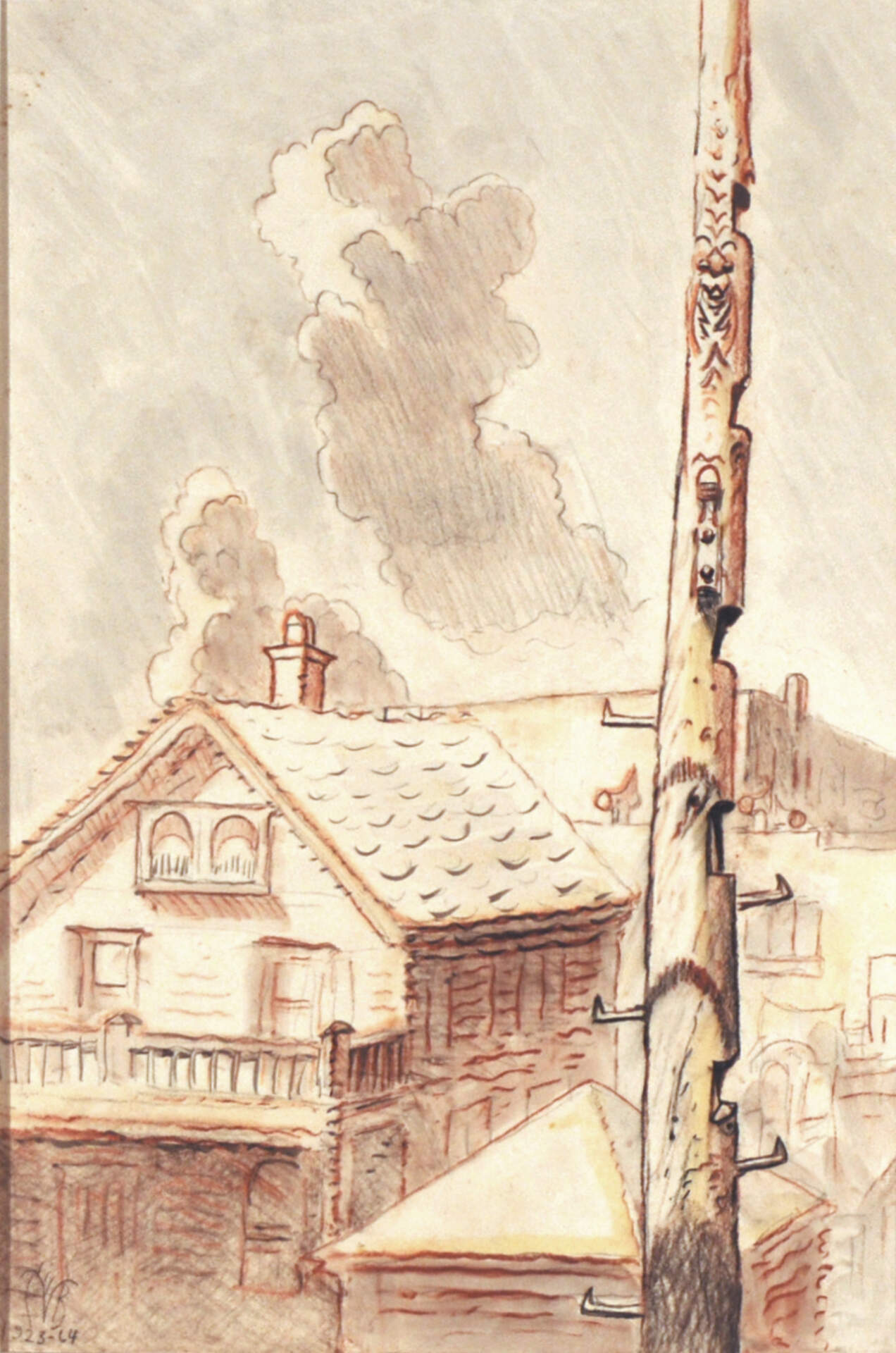Charles E. Burchfield (1893-1967)Cicada and Telegraph Pole
1923-64
red and black conté crayon, carbon pencil, and watercolor on paper
18 1/4 x 11 1/4 inches mounted on paper board, 20 3/4 x 14 3/4 inches
Burchfield Penney Art Center, Gift of Charles Rand Penney, 1994
Audibly, cicadas best characterize summer’s stifling heat. In artworks such as Cicada and Telegraph Pole (possibly a view from his fourth apartment in Buffalo at 459 Franklin Street), Burchfield created a specific audio-cryptogram for the cicada’s reverberating sound waves—a “brassy crescendo” as naturalist John Burroughs had described. Combining his distinctive sound pattern with greatly exaggerated scale of the cicada’s stout body conveys how loudly it dominates the airwaves. The greater the heat, the longer the song.
As early as August 2, 1913, Burchfield wrote about his attraction to the bizarre looking creature:
Its song is for me typical of a sultry summer day. When I hear it, I close my eyes and I see a white dusty road along which I am going in my bare feet (for I am a little boy when I hear it) which are burned by the hot dust from which arise quivering heat waves. The sky is the same—the blue turned to sickly whitish blue by the heat of the sun, and rolling thunderheads in the distance: great ivory mountains—rich fields for the imagination. And dominating all sounds—all other creatures are subdued by the heat—is the song of the cicada. I like the cicadas. Their big blunt heads are comical and to come across one of the empty shells of the young cicada, on a tree trunk has a charm for me—I don't know why.
— Nancy Weekly
